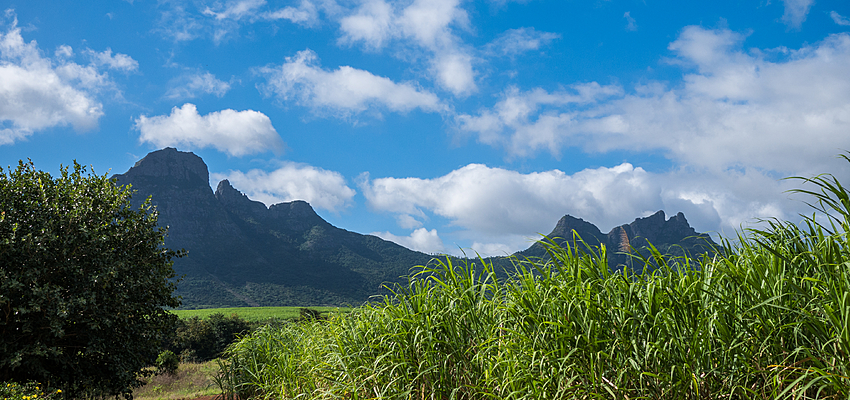Mauritius is located in the middle of the Indian ocean, to the east of Madagascar, the largest island in the African continent.
This small paradise is surrounded by lagoons and crystal clear water. There is a jungle in the interior part of the island and summer temperatures prevail throughout the year, making it one of the most beautiful and welcoming islands on the continent.
Although the island was first inhabited when it was colonized by the New Zealanders in 1638, it had already been known by the Arabs and Malays since the 10th century. Furthermore, the Portuguese arrived here in 1505, and the French ruled it from the 18th century. This is what led to the introduction and cultivation of numerous plant species on the island, giving it a biodiversity that is astounding to say the least.
In the botanical garden of Pamplemousses, tropical plants from the rest of the world like the talipot palm and giant water lilies grow and thrive thanks to Pierre Poivre, the man who introduced them in 1768.
Its main natural resource is its arable land. The main crop here is sugar cane, which occupies 70% of the island. It is one of the activities that drives the economy of the island, together with fishing.
However, there is also room for a not so exotic, tropical species that exists on the island, a crop that has spread all around the world, to the most remote places. It is a crop that captivates those who cultivate it and those who try its oil – we are referring to olive trees, of course. They made their way through the immensity of the Indian Ocean, where they grow alongside ebony, eucalyptus and araucaria trees. This site for sore eyes can be seen in the more than 400 hectares of wild forest in the Bras d’Eau reserve on the east coast of the island, where this crop has flourished in one of the most paradisiacal places on the planet.
A strange and uncommon combination of ebony and olive trees, shows that olive trees can not only coexist with Mediterranean plants, but are well able to adapt and thrive in any ecosystem that they find themselves in, whatever the nature and location of the place may be.

